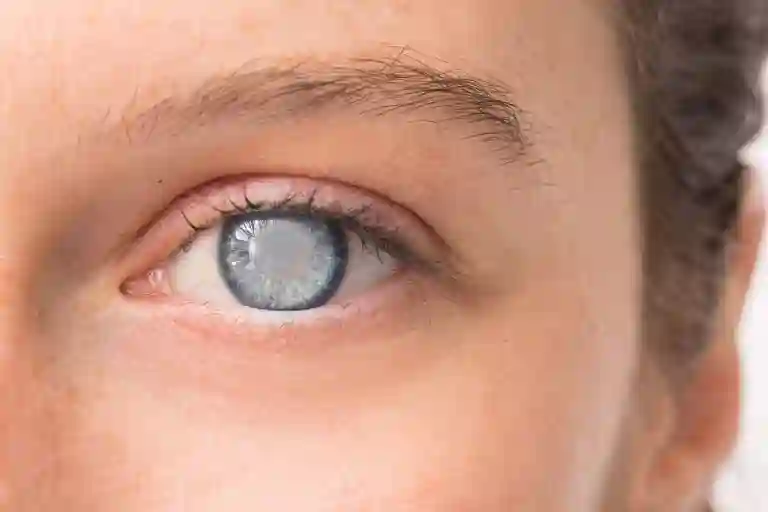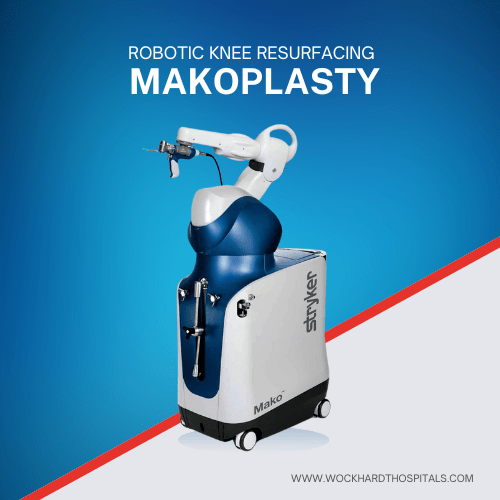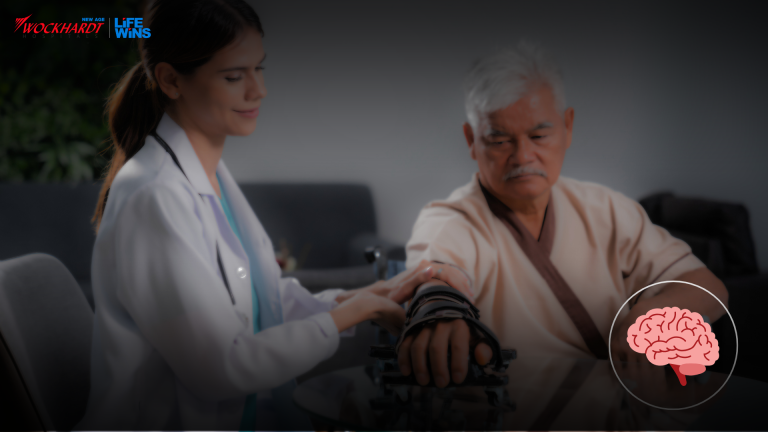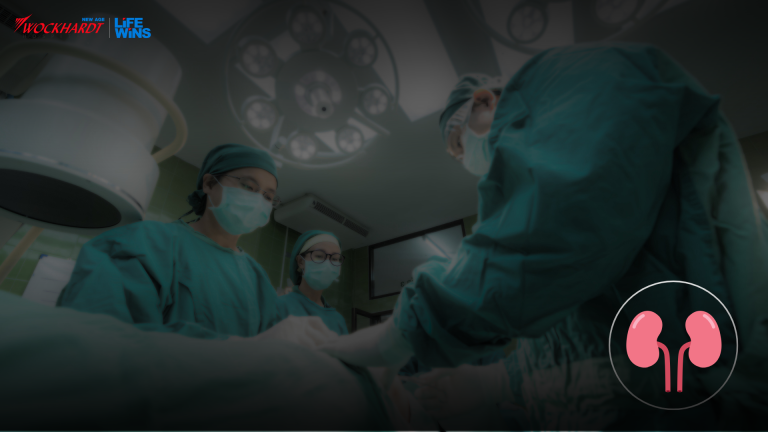What is Cataract Surgery?
Cataract surgery is a medical procedure performed to remove the affected cloudy lens in your eyes. The lens is affected by protein breakdown in the eyes, causing the lens to become cloudy and blurred. Cataracts increase glare by preventing light from passing through the lens, which might affect your daily activities. When a cataract interferes with your normal life, the highly experienced doctors and eye surgeons at Wockhardt Hospitals might suggest cataract surgery. A cataract surgery procedure is the only sure-shot way to treat this condition in adults.
Cataract surgery in India is done on an outpatient basis by a certified ophthalmologist and is a very common and safe procedure. We at Wockhardt Hospitals have performed a large number of successful cataract surgeries giving patients their vision back. Our ophthalmologists and surgeons are board certified and are backed by world-class medical facilities and well-trained staff to give the desired surgical results.
Signs & Symptoms of Cataracts
Typically, a cataract condition develops slowly. A person might not even be aware of their presence until they begin to block the light. As the symptoms start to surface, they might experience –
- Hazy, fuzzy, foggy, or filmy vision
- Alterations in how an individual sees color
- Age-related nearsightedness
- Glare issues during the day
- Vision in the damaged eye is double.
- Problems with spectacles or poorly functioning contact lenses
- Issues with nighttime driving, such as headlight glare from approaching vehicles
Once these symptoms start interfering with the regular lives of a person, they immediately need a cataract treatment.
Causes of Cataracts
Cataract surgery in India is done to treat cataracts that cause a variety of symptoms, including blurry vision, floaters, itching, etc. The majority of cataracts occur when the tissue of the eye’s lens changes due to aging or trauma. The lens’s proteins and fibers start to degrade, clouding or obscuring the vision. The risk of cataracts may be increased by hereditary and/or genetic abnormalities resulting in other health issues. Other eye diseases, previous eye surgery, or medical conditions, especially Diabetes, might also lead to cataracts. Also, the long-term use of steroid medicines can also result in cataract development.
Cataract Surgery – Dos & Don’ts
Usually, the doctors advise the patients regarding dos and don’t during the final consultation before the surgery. However, even after the surgery, the doctors will reiterate the precautions that must be taken after cataract treatment. Some of the most important dos & don’ts are mentioned below –
Dos
- Take medicines and put in eye drops as advised to prevent inflammation, itching, or irritation. This is because these are very common after surgery.
- Take proper rest and get household help to ensure you are timely fed and taken care of.
- Clean your eyes 2-3 times a day to prevent fluid buildup.
- Wear protective glasses day and night after the surgery.
- Shower only after your doctor advises.
- Hands must be properly washed and sanitized before applying any eye medicines.
- Contact the eye surgeon immediately in case of any complication or discomfort.
Don’ts
- Men must not shave for 2-3 days after surgery.
- Do not lift heavy objects.
- Avoid rubbing your eyes, as this might cause damage to the newly placed lens.
- Do not bathe without the doctor’s advice.
What Tests are Done to Diagnose Cataracts for their Effective Treatment?
To determine if you have a cataract, the doctor will physically examine your eyes, and to rule out other eye conditions, they will order the following cataract diagnostic tests –
- Visual Acuity Tests – An eye chart is used in a visual acuity exam to gauge how well you can read a string of letters. The doctors test one eye at a time to check the accuracy.
- Retinal Exam – This test uses a slit lamp or a device called Ophthalmoscope. Before the test, the doctor puts eye drops in the eyes to dilate the pupils.
- Applanation Tonometry – The doctor uses several devices to measure fluid pressure in the eyes.
- Slit-Lamp Examination – A slit lamp helps the doctor to see the magnified structure of the eyes. The device consists of a microscope, intense light, and a slit to see the cornea, iris, lens, and space in the eyes.
Treatment of Cataracts
The only effective treatment for cataracts is surgery; however, you might not require it immediately. You might be able to get by with a fresh prescription for your glasses if you identify the issue early. However, the need for surgery depends on how critical the condition is. If the cataract is diagnosed at the early stage, cataract can be taken care of by prescription glasses with stronger lenses to help the patient see clearly.
Though there are several types of cataract treatment procedures, all of them have one thing in common – the doctor replaces the cloudy and blurry lens with an artificial lens. It is a very common procedure and is generally safe. Doctors use local anesthesia to numb the eyes before the operation. Hence, the patient will not feel anything. The surgery usually takes less than 60 minutes, and the patient will be discharged on the same day. Also, if the cataract is in both eyes, the doctors will first perform the cataract operation procedure in one eye, and after it heals, they will continue with the other one.
Here’s a detailed process of the surgery performed at Wockhardt Hospitals-
- The doctor will put topical anesthesia to numb the eyes of the patient to ensure that the patient is pain-free throughout the procedure. Some medications to promote relaxation may also be given to the patient.
- While having surgery, the patient will be conscious but unable to see anything approaching. Only a rainbow of lights will be visible.
- Then, a small hole will be cut in the cornea using a laser or a blade.
- Lastly, the cataract will be dissected using a method called Phacoemulsification.
The lens is then divided into several tiny fragments by the surgeon using ultrasonic waves, and the pieces are vacuumed out. Also, the cataract surgery procedure does not require sutures.
The patient’s vision starts to improve a few days after cataract treatment. As the eye adjusts to the injury and heals, the vision may initially be blurry. After the cataract operation procedure, they may notice a bright and clearer view. This is because of the fresh and new lenses. After having a cataract surgery procedure, the majority of people use glasses, at least occasionally. When the eyes have recovered sufficiently to receive a final prescription for glasses, the doctor will let you know. This often occurs one to three months following surgery.
To manage inflammation, reduce eye pressure, and prevent infection, the doctor may advise eye drops or other medications. These drugs may occasionally be administered into the eye during surgery.
How Long Does it Take to Heal after Cataract Surgery?
Every individual’s body is different, which means the amount of time it will take to recover also varies. At first, you might have a blurry vision as your eyes are in their healing process. Take time to recover, and try giving your eyes the maximum amount of rest. Usually, the eyes start to get better within 1 to 2 days, but it is advisable not to perform any heavy task which might cause stress to your eyes. Also, it is prohibited not to lift heavy objects or bend.
Talk to your doctor when you can return back to work. They will tell you an estimated time when you can resume work. Most patients fully recover and heal in around eight weeks after the surgery. After the procedure, your doctor will schedule a few follow-up visits to check on your recovery and to ensure you are healing well.
Risk Factors for Cataracts
The surgery performed at Wockhardt Hospitals under the supervision of highly experienced eye surgeons usually does not cause any serious complications. It is done under topical anesthesia with eye drops. But, just like any other surgery, it also has some risk factors which increase the chance of complications. Below are some of the risk factors for your reference-
- Increasing Age
- Obesity
- Habits of Smoking
- Female Sex
- Inflammation
- Steroid medication use
- High blood pressure (Hypertension)
- Diabetic Retinopathy
- Alpha Blockade
- Previous Vitrectomy
- Corneal Opacity or Pathology
- Previous Retinal Detachment
- Intraoperative Complications
- Age-related Macular Degeneration
FAQs on Cataracts
Q. Which surgery is best for cataracts?
FLACS, or Femto Laser-Assisted Cataract Surgery, is a new innovative technique and is considered the best.
Q. Is cataract surgery painful?
Q. What age is best for cataract surgery?
Q. Can cataracts come back after surgery?


















